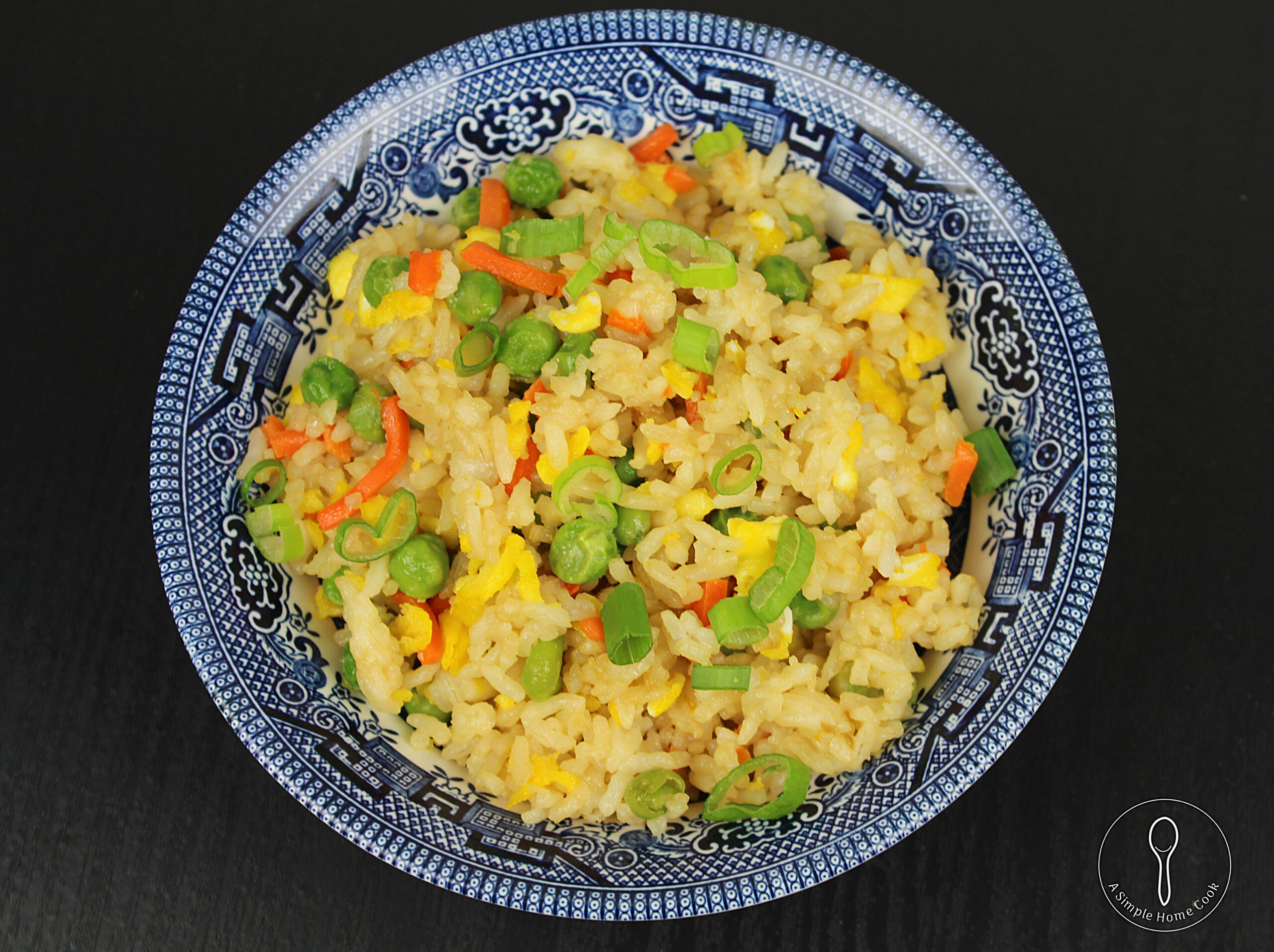We love Eastern Asian cuisine at my house. Over the years, I have been slowly learning to cook more Asian or Asian-inspired dishes at home. As a result, we have been able to eat many of our favorite dishes while not being able to go to our favorite Asain restaurants.
I found that some of the dishes we like are super easy and inexpensive to make. Plus, making them at home means that the taste is totally customizable to our preferences. The result is that we actually like a couple of our home-made versions better. One such dish is Fried Rice.
I find that there are several places (often Japanese steak houses) where I don’t really enjoy the fried rice very much. In fact, I think that the reason I use so much white/YumYum sauce on fried rice is to cover up its flavor. It wasn’t until my daughter asked if I thought we could make our own white/YumYum sauce as I was serving the first fried rice I ever made that I realized she apparently felt the same way. It turns out that being able to customize the ingredients to suit my family’s preferences eliminated our desire to use white/YumYum sauce.
The only ingredient that may be considered uncommon is the oyster sauce. While I never imagined that oyster sauce would be a staple ingredient in my kitchen even a few years ago, it is one that I know use at least once a week. It is the key ingredient to me for many dishes including stir-fries and fried rice. It gives the dishes something that is not easy to describe or replicate with other ingredients, Umami. Umami is the Japanese word for a savory taste, one of the five basic tastes (sour, sweet, bitter, and salty being the others). What is oyster sauce? Well, it is a dark thick sauce that is indeed made using oysters. However, it does not taste like oysters ( I really dislike oysters, but I really like the flavor oyster sauce gives a dish). It not only adds flavor, but it also adds color to a dish. It can be found in most grocery store Asain sections, Asain markets, or you can get it from Amazon. There are different brands and types of oyster sauce. I have used Kikomann and I currently have Lee Kum Kee’s Panda in my pantry. Whatever brand you select, there may be multiple versions of it. There are gluten-free, msg-free, and even oyster-free sauces available for those with allergies, sensitives, or personal preferences. Obviously, the oyster-free sauce is not really a real oyster sauce, but it is often mushroom-based sauce that is supposed to be a replacement for oyster sauce for vegetarians or those with allergies.
Here is a link for a normal-sized container of oyster sauce:
Here is the large size container I am considering getting – it is a better value
Fried Rice
Ingredients
- 1 Tbsp. oil or butter
- 3 eggs
- 1/2 tsp. salt
- 3+ Tbsp. butter
- 3 to 4 c. cooked rice, cold
- 8 to 10 oz. frozen peas and carrots
- 2+/- Tbsp. soy sauce, to taste
- 2+/- Tbsp. oyster sauce, to taste
- 1 tsp. sesame oil (optional)
- 2 green onions/scallions
Instructions
- Beat eggs well adding salt to the eggs.
- Cook as a thin omelet in a larger nonstick skillet with oil or melted butter on med.-low.
- Remove from skillet when cooked and slice into small strips or pieces.
- In another large skillet that is not non-stick, melt butter and add frozen vegetables and rice.
- Stir while heating on med. or high.
- Stir in soy sauce and oyster sauce; adding a little at a time until desired taste.
- Keep heating and gently stirring until rice and vegetables are hot.
- Remove from heat.
- Add sesame oil (if using) and scallions to taste.
- Serve warm.
Notes
White, Brown, Black and Red rices all work well in this dish. However, medium to long grains work better than shorter grains. The shorter grains stick together and/or fall apart.
Soy sauce and oyster sauce should be added in amounts to suit your taste.
I am slightly allergic to sesame, so I do not use it in fried rice. However, many Japanese steakhouses add it to their fried rice.
Other vegetables that are good in fried rice include broccoli (a family favorite) and mushrooms.




